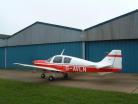Just trying to create a bootable floppy,like in the old days on Red Hat, with the mkbootdisk command. The initial response looks a bit confusing, with messages like:
cp: writing `/tmp/mkbootdisk.OaF940/initrd.img': No space left on device
cat: write error: No space left on device
cat: write error: No space left on device
It's only when I started digging, I realised that the 2.6 kernel is just too large for a floppy!
There are voices out there saying that you don't need a separate bootable floppy, since the first installation CD can be booted into a so called rescue mode, wich in turn will allow you to boot the system.
Just enter (at the boot prompt):
boot: linux rescue
and a cut down version of Linux (complete with a set of administration tools) pops into memory.
It's all good, but this requires several interactive steps, and when the shell prompt appears you need to exit, to reboot.
I say rescue mode is no good as a replacement for a boot disk, because:
1. By using rescue mode instead of boot disk you are compromising root password. Rescue mode is there to fix things - that requires superuser privileges, hence it automatically boots into a shell belonging to root.
2. When you exit out of the rescue shell, to reboot, you need a bootable device! Haven't tested this, but I'm quietly confident that you'd hit a chicken and egg scenario - what are you going to boot after exiting rescue mode?
3. What if you installed the system over the network and you don't actually have installation CDs? OK, one could argue that you can always dowload the installation CDs. However, that may not be feasible or, indeed, allowed on your site!
So, I would still recommend using a boot device - not a floppy, but a CD. Use the same mkbootdisk command, but this time the destination would be not a floppy disk, but an iso file on your hard disk, which you can later burn onto a CD:
# mkbootdisk --iso --device --noprompt /bootdsk.iso $(uname -r)
So, there, there.
Twitter Updates
G-AVLN in front of her home

Mostly Unix and Linux topics. But flying might get a mention too.
Subscribe to:
Post Comments (Atom)
Blog Archive
- October (1)
- June (1)
- April (2)
- February (3)
- June (1)
- March (1)
- August (3)
- July (2)
- June (1)
- March (1)
- June (3)
- May (1)
- April (5)
- February (1)
- January (5)
- October (1)
- September (3)
- July (4)
- June (5)
- April (3)
- March (1)
- February (3)
- January (3)
- October (7)
- August (2)
- July (3)
- May (1)
- November (4)
- October (1)
- September (1)
- August (2)
- July (2)
- June (3)
- May (3)
- April (2)
- March (2)
- February (3)
- January (1)
- December (2)
- November (1)
- October (6)
- September (6)
- August (1)
- July (2)
- June (8)
- May (3)
- April (4)
- March (3)
No comments:
Post a Comment